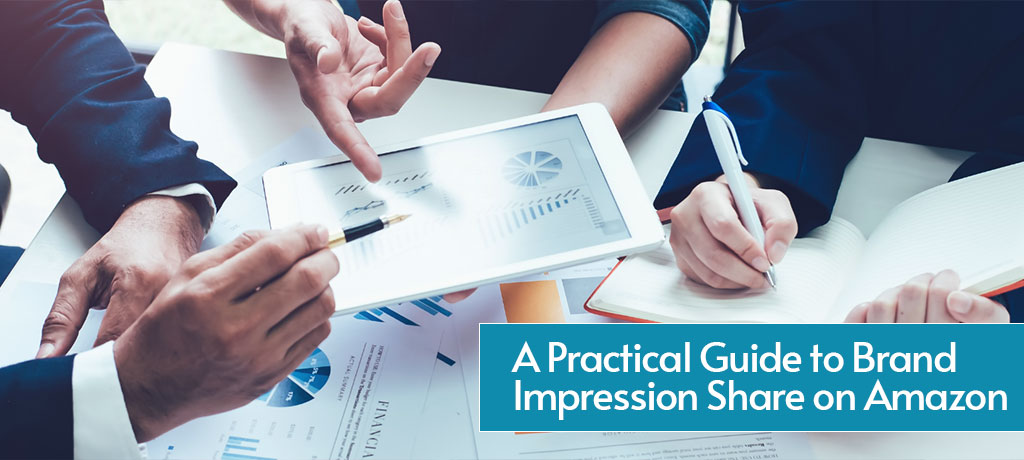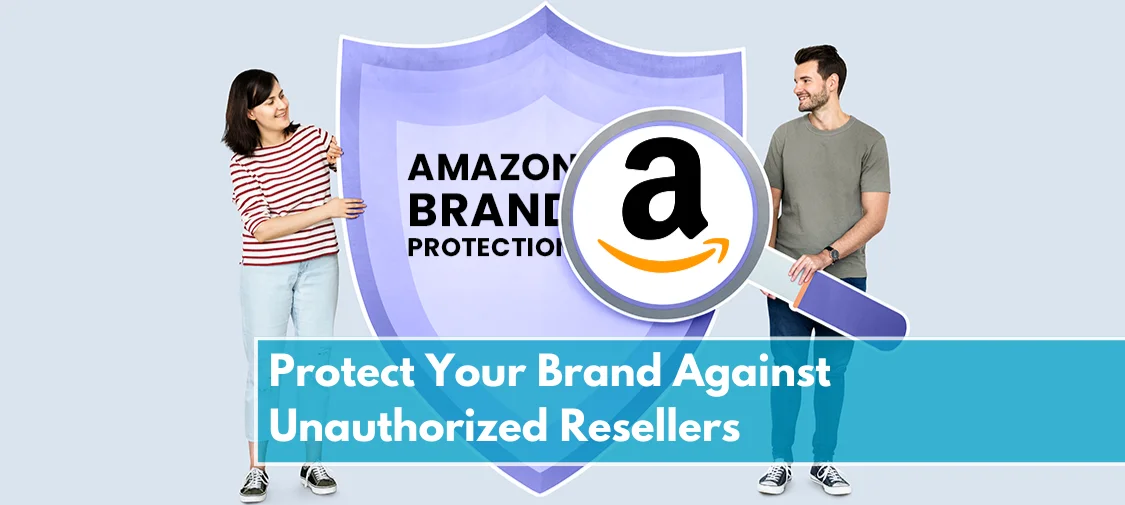Amazon
A Practical Guide to Brand Impression Share on Amazon
How Tracking and Improving Brand Impression Share Impacts Growth for Established Brands
For brands already scaling on Amazon, it’s easy to focus on top-line sales while missing a key metric that directly affects market share and visibility: Brand Impression Share.
It tells you how often your brand shows up when shoppers are in buying mode—compared to how often it could be showing up. And that gap? That’s where growth is being left on the table.
This guide breaks down how established brands can monitor, interpret, and act on Brand Impression Share to drive results across sales, advertising efficiency, and brand control.
The Problem: You May Be Losing Rank Without Noticing
Amazon doesn’t warn you when a competitor is consistently outbidding you on branded terms. You’ll still see sales coming in, but what you won’t see without the right data is how often:
- Your competitor’s ads are winning visibility on your own branded keywords
- Shoppers are switching due to lack of presence or pricing confusion
- Amazon is surfacing resellers or similar brands instead of you
This usually happens when:
- Your ad coverage isn’t consistent across key branded and category terms
- Your campaign structures don’t prioritize visibility
- MAP violators or resellers dilute your presence
The result? Declining share of voice, even while revenue stays flat or grows slowly.
What Brand Impression Share Really Tells You
If you’re not regularly reviewing your Brand Impression Share, you’re missing a direct signal of how visible your brand is where shoppers are most active.
The Amazon Brand Impression Share Report, available through Brand Registry, gives you clarity into:
- % of Impressions your brand received in a category, subcategory, or keyword set
- Comparison vs. Category Leaders to benchmark your visibility performance
- Growth Trends Over Time so you can monitor whether your brand’s visibility is improving or slipping
This data is especially useful for brands managing multiple ASINs across categories. It helps uncover blind spots in campaign coverage, pinpoints areas of opportunity, and flags where competitor activity is eroding your share.

This metric is especially valuable when combined with:
- Conversion Rates on branded vs. non-branded traffic
- Ad Spend efficiency in protecting your own brand
- Buy Box % to check reseller interference
How Low Brand Impression Share Impacts Performance
When your brand isn’t constantly appearing in relevant search results, the cost goes beyond missed impressions:
- Higher Ad Spend
You end up paying more to reacquire customers who were already searching for your brand but saw competitor ads instead. - Lost Sales to Competitors or Resellers
Low visibility allows look alike brands or unauthorized resellers to capture traffic meant for you, leading to revenue leakage. - Erosion of Brand Presence
Inconsistent appearance on key terms weakens your brand’s position in the category and reduces buyer trust over time.

3 Ways to Use Brand Impression Share to Grow Efficiently
1. Benchmark Across Key Categories
Pull the Brand Impression Share report weekly and review:
- Branded terms: Are you leading where it matters?
- Category terms: Are you showing up in the buyer journey?
- Top competitors: Who is gaining share, and where?
Use this data to inform:
- Budget shifts between branded, competitor, and category campaigns
- Defensive ad strategies to block resellers or similar brands
2. Rebuild Your Branded Campaign Structure
Most brands under-invest in protecting their own name. Set up separate Sponsored Brand and Sponsored Product campaigns with these focuses:
- Brand Defense: Exact match on your own brand name, variations, misspellings
- ASIN Defense: Target your own product detail pages to block competitor conquesting
- Video and SBV Coverage: Showcase your USP and strengthen brand control
3. Align MAP and Ad Strategy
When resellers are winning visibility on your branded terms, your campaigns lose efficiency and your customer experience suffers. Even with solid ad spend, unauthorized sellers can undercut your efforts if your pricing and Buy Box strategies aren’t aligned.
To protect visibility and restore efficiency:
- Use MAP monitoring tools to flag price violations and identify sellers who are eroding your share
- Enforce compliance through Amazon Brand Registry and direct reseller outreach
- Improve Buy Box ownership by keeping inventory healthy, pricing competitive, and fulfillment Prime-eligible

Once enforcement is in motion, revisit your Brand Impression Share report to check whether visibility is improving where it matters. The goal is to ensure your brand—not resellers—is leading on all branded search terms.
| Weekly Brand Share Audit Checklist 1. Pull Report Download Brand Impression Share from Brand Metrics. Filter by branded and top category terms. 2. Check Share % Identify low visibility areas. Prioritize branded terms under 80% and high-potential category terms. 3. Adjust Budgets Reallocate spend to boost low-share, high-impact campaigns. 4. Expand Coverage Add Sponsored Brands, Videos, and ASIN-targeted ads for defense. 5. Audit Resellers Cross-check Buy Box and MAP compliance to spot visibility loss. 6. Refresh Creative Update ad creatives on high-volume terms to protect brand consistency. |
Where Established Brands Should Start
If you’re running ads but not reviewing your brand impression share weekly, you’re driving without a dashboard.
Start with:
- Your top 5 ASINs by revenue
- Run Brand Impression Share reports across your category
- Set a target: 90%+ share on branded terms, 50%+ on top category terms
- Rebuild campaigns around these targets and adjust budgets based on actual shar
Final Takeaway
For established Amazon brands, controlling Brand Impression Share is not just an ad strategy—it’s a visibility strategy. It tells you if your brand is showing up where it should, for the customers who are most likely to buy.
Brands working with Prime Retail Solution often discover that weak impression share was the bottleneck. Once we optimized branded coverage, restructured campaigns, and enforced MAP, ad efficiency improved and sales scaled up without increasing spend.
If you’re ready to regain control of your brand presence on Amazon, it may be time to hire an exclusive 3P partner to manage your catalog, protect your share, and unlock the next stage of growth.
Share





